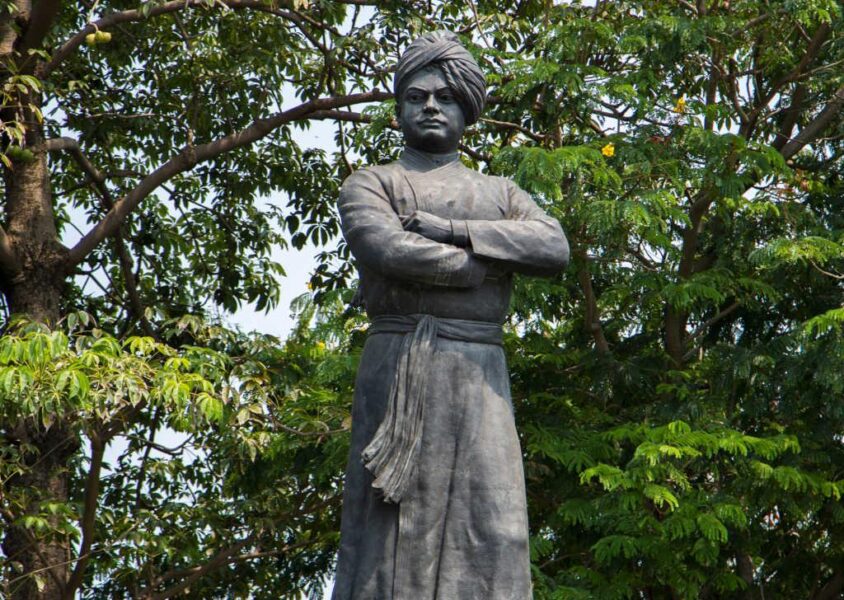Swami Vivekananda

Narendranath Dutta, born on 12 January 1863 when India was under British rule, took the monastic name Swami Vivekananda after his Guru Sri Ramakrishna Paramahansa gave up his mortal body in August 1886. Swami, meaning the Master of himself, is the monastic title after renunciation. Vivek in Sanskrit means the power of discernment.
Narendra was one of the nine siblings. He was interested in spiritual activities and meditation right from his early childhood. In a way, spiritualism was in the family as his grandfather also became a monk. In addition, his mother, Bhubaneswari Devi, was a very devout person. Besides being a very good student academically and in sports, Narendra was an avid reader and deeply interested in Hindu scriptures. Further, he was trained in Indian classical music.
Narendra became a disciple of Sri Ramakrishna in 1881. However, due to his association with the Brahmo Samaj, Narendra did not use to believe in God. Sri Ramakrishna managed to change Narendra’s perception of God. The Kali Temple in Dakshineshwar is famous for the many stories of Sri Ramakrishna and Narendra with the living Goddess Kali in that temple. As his spiritual journey evolved, Narendra moved from the Brahmo Samaj teachings to Advaita Vedānta. Interestingly, Sri Ramkrishna also managed to make an Advaita Vedantic person, for whom the Self is within and is the only Reality, believe in and worship Goddess Kali.
After his Guru’s passing, Narendra took the monastic vows and became a monk named Swami Vivekananda. With the blessings of the Holy Mother, Swami Vivekananda began to explore and travel all over India. He realized how the centuries of oppression by the Muslim and British invaders were the cause of the poverty and low morale of the masses.
Swami Vivekananda realized that despite being bestowed with the immense wealth of Vedantic wisdom, the masses were ignorant of the ways to improve their lives. So he formed the Ramakrishna Mission and began to spread the teachings of the Vedantic Hindu culture to instill confidence and hope.
In 1898 Swami Vivekanand started the Belur Math, which was open to all men without distinction of religion, race, or caste to learn about, participate and propagate the teachings of Vedanta. It also included various forms of social service, including running hospitals, schools, and rehabilitation centers. Swami Vivekananda traveled across India delivering lectures to infuse confidence and faith in the people’s minds.
Swami Vivekananda traveled to the United States in 1893 and delivered one of his most famous speeches to the 1893 World’s Parliament of Religions in Chicago. Swamiji was the first to introduce the Hindu Dharma to the western world in a major way. He won the audience’s hearts with his opening sentence when he said, “My Brothers and Sisters of America.” Swami Vivekananda explained the concepts of Vedanta and the teachings of Bhagavat Gita to a rapt audience and put the Hindu Dharma on the world stage as the most tolerant and open religion of the world.